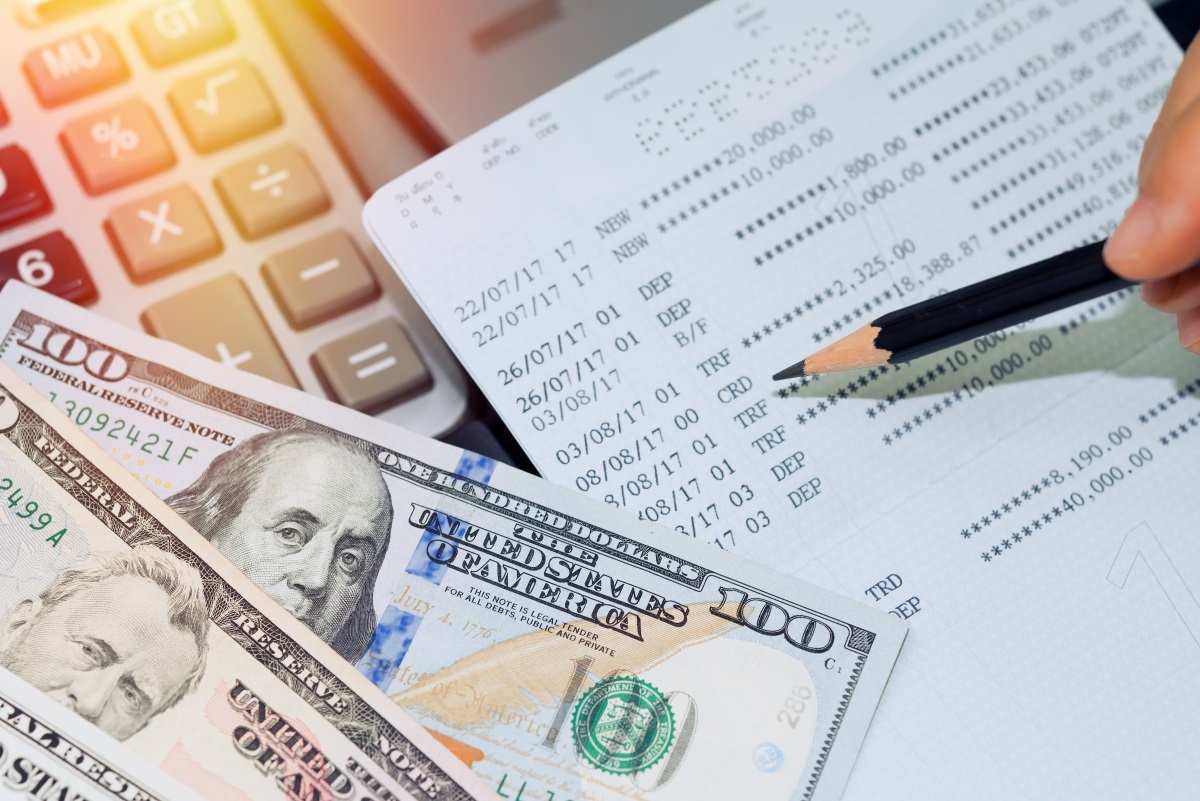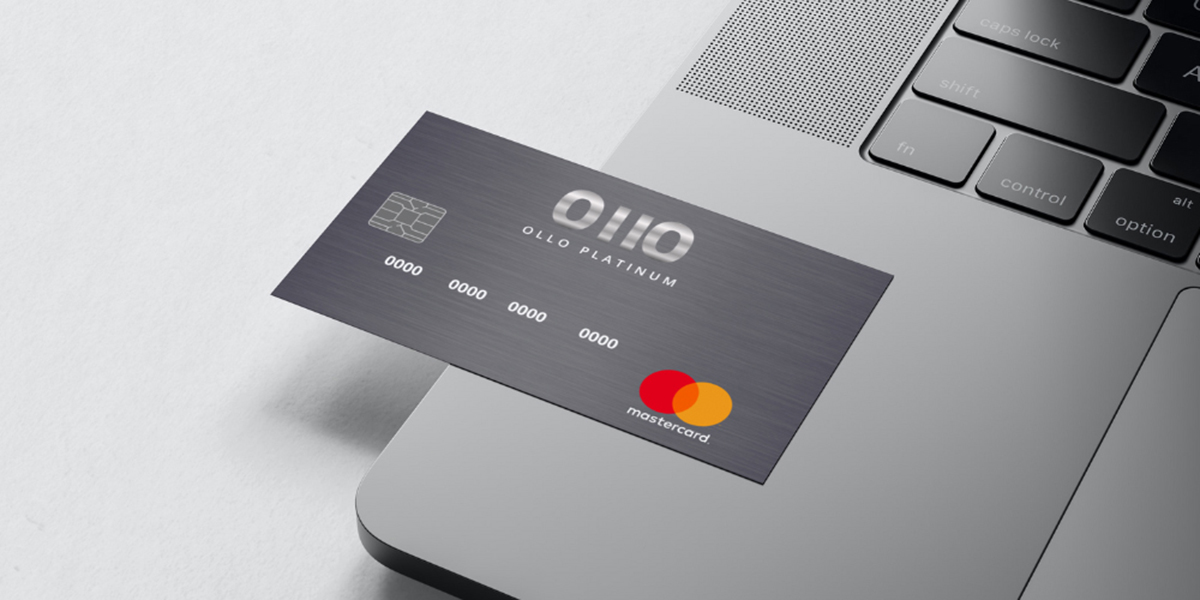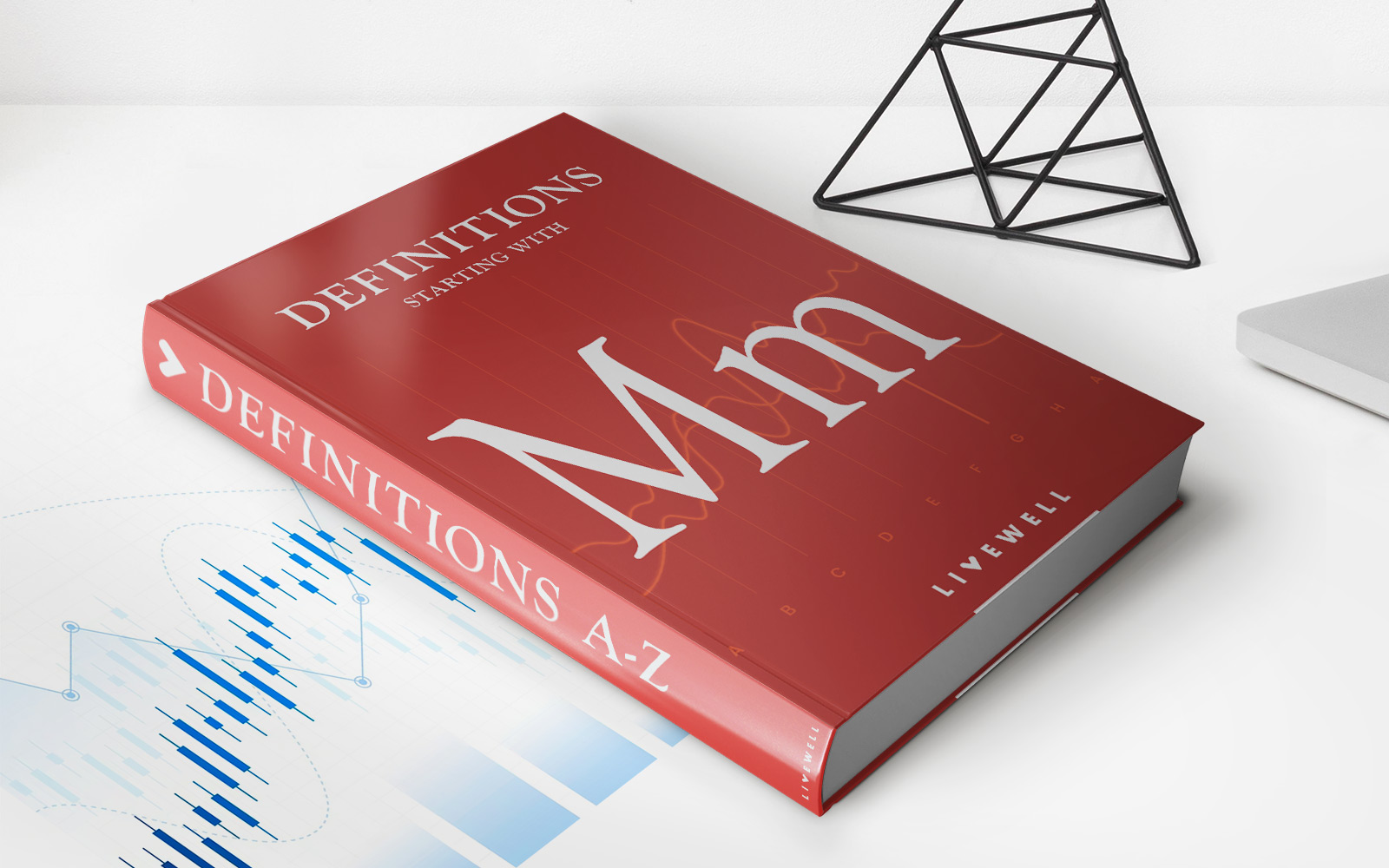

Finance
What Is A Debt Relief Order
Published: December 21, 2023
Looking for a way to get out of debt? Find out what a debt relief order is and how it can help you manage your finances effectively.
(Many of the links in this article redirect to a specific reviewed product. Your purchase of these products through affiliate links helps to generate commission for LiveWell, at no extra cost. Learn more)
Table of Contents
- Introduction
- Definition of Debt Relief Order
- Eligibility Criteria for Debt Relief Order
- Application Process for Debt Relief Order
- Impact of Debt Relief Order on Debts
- Effect of Debt Relief Order on Credit Rating
- Duration and Monitoring of Debt Relief Order
- Benefits and Limitations of Debt Relief Order
- Alternatives to Debt Relief Order
- Conclusion
Introduction
Debt Relief Order is a legal solution available in many countries for individuals who are experiencing financial difficulties and are unable to repay their debts. It provides individuals with a way to manage and reduce their debts, offering them a fresh start on their financial journey.
A Debt Relief Order (DRO) is designed to help people with low income and minimal assets who owe a relatively small amount of debt. It is a form of debt relief that enables individuals to have their debts frozen and ultimately discharged after a specific period, typically 12 months. It is an alternative to bankruptcy and can be a viable option for those who cannot afford to pay off their debts.
The main objective of a Debt Relief Order is to provide individuals with a realistic chance to free themselves from overwhelming debt and regain control of their finances. It offers a fresh start, allowing individuals to rebuild their financial life without the burden of unmanageable debt.
It is important to note that the specifics of a Debt Relief Order can vary from country to country, so it’s essential to familiarize yourself with the regulations and eligibility criteria of your respective jurisdiction.
Definition of Debt Relief Order
A Debt Relief Order (DRO) is a legal process that provides individuals with a way to address their debt problems when they are unable to pay off their creditors. It is designed for individuals who have a low income, minimal assets, and owe a relatively small amount of debt. A DRO works by freezing the individual’s debt and providing them with a 12-month period during which they can work towards resolving their financial situation.
During the DRO period, creditors are not allowed to take any legal action against the individual to recover their debts. This means that individuals are protected from any further collection activity, including court proceedings, enforcement actions, or contact from creditors. At the end of the 12-month period, assuming the individual’s circumstances have not changed significantly, the debts included in the DRO are typically discharged, meaning the individual is no longer responsible for repaying them.
A Debt Relief Order is a formal insolvency procedure that is governed by specific rules and regulations. It can only be applied for through an authorized debt adviser or an approved intermediary. The adviser will assess the individual’s eligibility for a DRO, gather the necessary information, and submit the application to the appropriate authority.
It is important to note that not all types of debts can be included in a Debt Relief Order. Debts such as student loans, court fines, child support, and secured debts (such as a mortgage or car loan) are typically excluded. It is essential to understand the specific eligibility criteria and debt restrictions that apply in your jurisdiction.
Eligibility Criteria for Debt Relief Order
While the specific eligibility criteria for a Debt Relief Order (DRO) can vary depending on the jurisdiction, there are certain common requirements that individuals must typically meet:
- Residency: Usually, individuals must reside in the country where they are applying for a DRO. Some jurisdictions may also require individuals to have been living in the country for a specific period of time.
- Debt Level: Typically, the total unsecured debts that an individual has should not exceed the maximum debt limit set by the authorities. This limit varies, but it is usually in a range that ensures DROs are accessible to those with relatively low levels of debt.
- Disposable Income: Individuals must have a low disposable income, which means they have minimal funds available to repay their debts after meeting their essential living expenses. The disposable income threshold varies depending on the jurisdiction.
- Assets: Generally, individuals must not own assets of significant value. This can include properties, vehicles, or other valuable possessions. However, specific rules regarding allowable assets can vary, and some jurisdictions may allow certain exemptions.
- No Previous DRO: Individuals who have already been granted a DRO within a specific time period (usually six years) may be ineligible to apply for another one.
It is crucial to remember that the eligibility criteria can differ between jurisdictions, and additional requirements may apply. It is recommended to consult with a qualified debt adviser or an approved intermediary who can assess your specific circumstances and determine your eligibility for a Debt Relief Order.
Application Process for Debt Relief Order
The application process for a Debt Relief Order (DRO) involves several steps, and it is essential to follow them carefully to ensure the smooth processing of your application:
- Seek Professional Advice: Before applying for a DRO, it is wise to seek advice from a qualified debt adviser or an approved intermediary. They can assess your financial situation, determine if a DRO is the right solution for you, and guide you through the application process.
- Gather Required Information: You will need to provide various details and documents as part of your DRO application. This can include proof of identity (such as a passport or driver’s license), details of your debts and creditors, information about your income and expenses, and any assets you own. Having all this information ready will streamline the application process.
- Complete Application Form: Your debt adviser or approved intermediary will help you complete the necessary DRO application form. They will ensure that all relevant information is accurately filled out and that any supporting documents are attached.
- Submit Application: Once your DRO application form is complete, your debt adviser or approved intermediary will submit it on your behalf to the appropriate authority responsible for processing DRO applications. They will also pay the required application fee, if applicable.
- Assessment and Decision: The authority responsible for processing DRO applications will review your submission, assess your eligibility, and make a decision on your application. This review process typically takes a few weeks, during which they may request additional information or clarification if needed.
- DRO granted: If your application is approved, you will receive a confirmation of your Debt Relief Order. This will specify the debts included in the DRO and the duration of the order, typically 12 months.
- Ongoing Obligations: Once your DRO is granted, you have certain obligations to fulfill during the DRO period. This can include making regular payments if you have surplus income, cooperating with the Official Receiver, and informing them of any changes in your circumstances.
- Discharge of Debts: At the end of the DRO period, assuming you have complied with the obligations and your circumstances have not changed significantly, the debts included in the DRO are typically discharged. You are no longer legally obligated to repay those debts.
It is crucial to work closely with a qualified debt adviser or an approved intermediary throughout the application process. They can provide guidance, ensure all requirements are met, and help you navigate any challenges that may arise.
Impact of Debt Relief Order on Debts
A Debt Relief Order (DRO) can have a significant impact on your debts. Here are some key points to understand:
- Freezing of Debts: Once a DRO is granted, your debts included in the order are effectively frozen. This means that your creditors cannot pursue legal action or enforce collection activities against you during the DRO period, typically 12 months. It provides you with crucial relief and protection from ongoing harassment or pressure from creditors.
- No Interest or Charges: While your debts are frozen, no additional interest, charges, or penalties can be added to them. This ensures that your debts do not continue to grow during the DRO period and allows you to focus on managing and resolving your financial situation without the burden of increasing debt.
- Discharge of Qualifying Debts: At the end of the DRO period, assuming you have met the obligations and your circumstances have not significantly changed, the debts included in the DRO are typically discharged. This means you are no longer legally obligated to repay those debts, providing you with a fresh start and the opportunity to rebuild your financial life.
- Exclusion of Certain Debts: Not all types of debts can be included in a DRO. Debts such as secured debts (e.g., mortgages, car loans), court fines, child support, and student loans are typically excluded from a DRO. It is important to understand which debts can and cannot be included in your jurisdiction to manage your expectations.
- Impact on Joint Debts: If you have joint debts with another person, such as a spouse or partner, the DRO will only protect you from legal action and collection activities related to your share of the debt. The other person will remain responsible for their portion of the debt.
- Limitations on Borrowing: While under a DRO, you are subject to restrictions on borrowing a significant amount of credit without disclosing your DRO status. It is important to be aware of these limitations to avoid any potential issues or violations.
It is crucial to carefully consider the impact of a DRO on your debts and seek advice from a qualified debt adviser or an approved intermediary. They can provide you with personalized guidance based on your unique financial situation and help you understand how a DRO will affect your specific debts.
Effect of Debt Relief Order on Credit Rating
Applying for and being granted a Debt Relief Order (DRO) can have a significant impact on your credit rating. Here are some key points to understand:
Negative Impact: A DRO is a formal insolvency procedure and will be recorded on your credit file. It may have a negative impact on your credit rating, making it more challenging for you to obtain credit in the future. Creditors and lenders will be able to see the DRO on your credit report, which may make them hesitant to extend credit to you due to the perceived risk.
DRO on Credit Report: The DRO will remain on your credit report for a specified period, typically six years. This can make it difficult to access mainstream borrowing options during that time. It is important to understand that obtaining credit, such as loans or new credit cards, may be significantly more challenging while the DRO is on your credit report.
Rebuilding Credit: While a DRO will affect your credit rating, it is not permanent. You can take steps to rebuild your credit over time. This can include making timely payments on any remaining debts, using credit responsibly when available, and demonstrating good financial management practices. It may take time, but with responsible credit behavior, you can gradually improve your credit rating.
Credit Reference Agencies: The credit reference agencies in your jurisdiction will be notified of the DRO, and they will update your credit report accordingly. It is advisable to regularly check your credit report from these agencies to ensure that the information is accurate and up to date.
Disclosure of DRO: When applying for credit in the future, you will likely be required to disclose any previous insolvency proceedings, including a DRO. Failing to disclose this information can be considered fraudulent and may have severe consequences.
Impact on Affordability Assessments: Even after the DRO period ends and the debts are discharged, some lenders may still consider your previous insolvency history when assessing your affordability for credit. This means that they may use additional caution or apply stricter criteria when determining whether to approve your application for credit.
It is important to fully understand the potential impact of a DRO on your credit rating and future borrowing options. Seeking advice from a qualified debt adviser or an approved intermediary can help you explore alternative solutions and make an informed decision based on your specific financial circumstances.
Duration and Monitoring of Debt Relief Order
A Debt Relief Order (DRO) has a specific duration and involves monitoring to ensure compliance with the requirements. Here are some key details to understand about the duration and monitoring of a DRO:
Duration: A DRO typically lasts for a period of 12 months. During this time, your debts are frozen, and creditors are prohibited from taking legal action or enforcing collection activities against you. It provides you with the breathing space to address your financial difficulties and work towards resolving your debts.
Monitoring: Throughout the DRO period, the Official Receiver or an appointed insolvency practitioner will monitor your financial situation. Their role is to ensure that you are meeting the obligations, providing accurate information, and cooperating with the requirements of the DRO.
Ongoing Obligations: While under a DRO, you have specific obligations that you must fulfill. These obligations may include:
- Making regular payments if you have surplus income: If your income exceeds your essential living expenses, you may be required to make regular payments towards your debts. These payments typically continue for the duration of the DRO period.
- Informing the Official Receiver of any changes in your circumstances: You must notify the Official Receiver of any significant changes in your financial circumstances, such as an increase in income or an inheritance. Such changes may impact your eligibility for the DRO.
- Cooperating with the Official Receiver: You must provide accurate and timely information to the Official Receiver or the appointed insolvency practitioner. This includes providing necessary documentation, responding to their inquiries, and attending any meetings or interviews related to your DRO.
- Restrictions on borrowing: While under a DRO, there are limitations on obtaining credit without disclosing your DRO status. You must be transparent about your insolvency status when applying for credit.
Extensions and Revocations: In certain circumstances, the DRO period may be extended beyond the initial 12 months. This can happen if your financial situation has significantly changed, or if you fail to comply with the obligations of the DRO. On the other hand, if you breach the terms of the DRO or fail to meet your obligations, it can be revoked, and creditors can resume legal action to recover their debts.
Annual Review: At the end of the DRO period, there is usually an annual review to ascertain whether you have met your obligations and your circumstances have not significantly changed. If all requirements have been fulfilled, the debts included in the DRO are typically discharged.
It is important to understand the duration of a DRO and adhere to the monitoring and obligations during that time. Working closely with the Official Receiver or the appointed insolvency practitioner can help ensure compliance and a smooth transition towards debt resolution.
Benefits and Limitations of Debt Relief Order
A Debt Relief Order (DRO) can be a valuable tool for individuals facing overwhelming debt. It offers several benefits, but it is important to also consider its limitations. Here are some key benefits and limitations of a DRO:
Benefits:
- Debt Relief: A DRO provides individuals with a chance to free themselves from unmanageable debt. It freezes their debts for a period of 12 months and offers potential discharge of those debts at the end of the period, providing a fresh start to rebuild their financial lives.
- Protection from Legal Action: Once a DRO is granted, creditors are prohibited from taking legal action or enforcing collection activities against the individual. This protection relieves individuals from the stress of court proceedings or aggressive collection measures such as bailiffs or wage garnishments.
- Affordability: DROs are designed for individuals with low income and minimal assets, making it an affordable option for debt relief. The fees associated with a DRO are typically lower compared to other debt solutions like bankruptcy.
- Relief from Debt Repayments: During the DRO period, individuals are not required to make payments towards their debts. This allows them to allocate their income towards essential living expenses and rebuild their financial stability.
- Professional Support: Applying for a DRO requires working with a qualified debt adviser or an approved intermediary. They provide guidance throughout the process, ensuring that individuals understand their options, meet the eligibility criteria, and complete the necessary paperwork accurately.
Limitations:
- Impact on Credit Rating: A DRO can have a negative impact on an individual’s credit rating, making it challenging to access credit in the future. The DRO remains on the credit file for a specified period, typically six years, and may be viewed negatively by potential creditors.
- Debt Restrictions: Not all types of debts can be included in a DRO. Debts such as secured debts (e.g., mortgages, car loans), court fines, child support, and student loans are typically excluded. Understanding the debt restrictions is important to manage expectations.
- Asset Restrictions: Individuals with significant assets or valuable possessions may not be eligible for a DRO. The value of allowable assets can vary depending on the jurisdiction, and some assets may need to be sold to repay creditors.
- Impact on Employment: Individuals working in certain sectors, such as financial services, may face restrictions or professional consequences if they have a DRO. It is important to consider any potential implications on employment when exploring debt relief options.
- Public Record: A DRO is a formal insolvency procedure and will be recorded on public records. This means that it is accessible to the public and can impact an individual’s reputation and transparency relating to their financial history.
It is crucial to carefully weigh the benefits and limitations of a DRO and to seek advice from a qualified debt adviser or an approved intermediary to determine if it is the right option for your specific financial circumstances.
Alternatives to Debt Relief Order
While a Debt Relief Order (DRO) can be an effective solution for individuals struggling with debt, it is important to explore all available options before making a decision. Here are some alternative approaches to consider:
Informal Negotiations: Before pursuing a formal insolvency procedure like a DRO, it may be beneficial to negotiate with your creditors on an informal basis. You can contact your creditors directly or seek assistance from a debt adviser to discuss repayment plans, debt restructuring, or the possibility of reducing interest rates.
Debt Management Plan (DMP): A Debt Management Plan is a structured agreement between you and your creditors, overseen by a licensed debt management company. It allows you to make affordable monthly payments towards your debts, based on your income and expenditure. It can provide you with more flexibility and control over your debt repayments compared to a DRO.
Individual Voluntary Arrangement (IVA): An IVA is a formal agreement between you and your creditors to repay a percentage of your debts over a fixed period, usually five years. It is a legally binding arrangement which allows you to make affordable payments towards your debts. An IVA can be a suitable alternative to a DRO for individuals who have a regular income but require assistance to manage their debt.
Bankruptcy: For individuals with overwhelming debt and no feasible prospect of repaying it, bankruptcy may be an option to consider. Bankruptcy provides the opportunity to have your debts discharged, but it can have more severe consequences than a DRO, such as the potential sale of assets and longer-term impact on credit rating.
Debt Consolidation: Consolidating your debts involves combining multiple debts into a single loan or credit facility. This can help simplify your repayments and potentially secure a lower interest rate, making it easier to manage your debts. However, it is important to carefully assess the terms and overall cost of the consolidation loan to ensure it is a viable and cost-effective solution.
Seeking Financial Advice: Consulting with a qualified debt adviser or a financial counselor can provide you with valuable insights and guidance regarding your specific financial situation. They can assess your circumstances, recommend appropriate debt management strategies, and provide information on the pros and cons of various options available to you.
Each individual’s financial circumstances are unique, so it is important to consider all the available alternatives and choose the option that best aligns with your specific needs. Seeking professional advice is crucial to make an informed decision that will help you regain control of your finances and work towards a debt-free future.
Conclusion
A Debt Relief Order (DRO) can be a lifeline for individuals overwhelmed by debt, offering them a chance to regain control of their finances and start anew. It provides a legally binding solution that freezes debts, protects individuals from legal action, and potentially discharges their debts at the end of the designated period. However, it is crucial to carefully weigh the benefits and limitations of a DRO before making a decision.
While a DRO can bring many advantages, such as debt relief, protection, and affordability, it is essential to consider alternative options as well. Informal negotiations, debt management plans, individual voluntary arrangements, bankruptcy, and debt consolidation are all possible alternatives that may better suit an individual’s specific financial circumstances.
It is important to seek advice from a qualified debt adviser or an approved intermediary who can assess the individual’s unique situation and provide personalized guidance. They can help explore the available options, explain the potential impacts on credit rating and future borrowing prospects, and ensure compliance with the obligations and requirements of any chosen debt relief solution.
Ultimately, the goal is to find the most suitable path towards financial stability and debt resolution. Whether that is a Debt Relief Order or an alternative approach, taking the initiative to address your debts is a significant step towards a brighter financial future. Remember, the path to financial freedom is not always easy, but with dedication, support, and responsible financial management, it is achievable.














